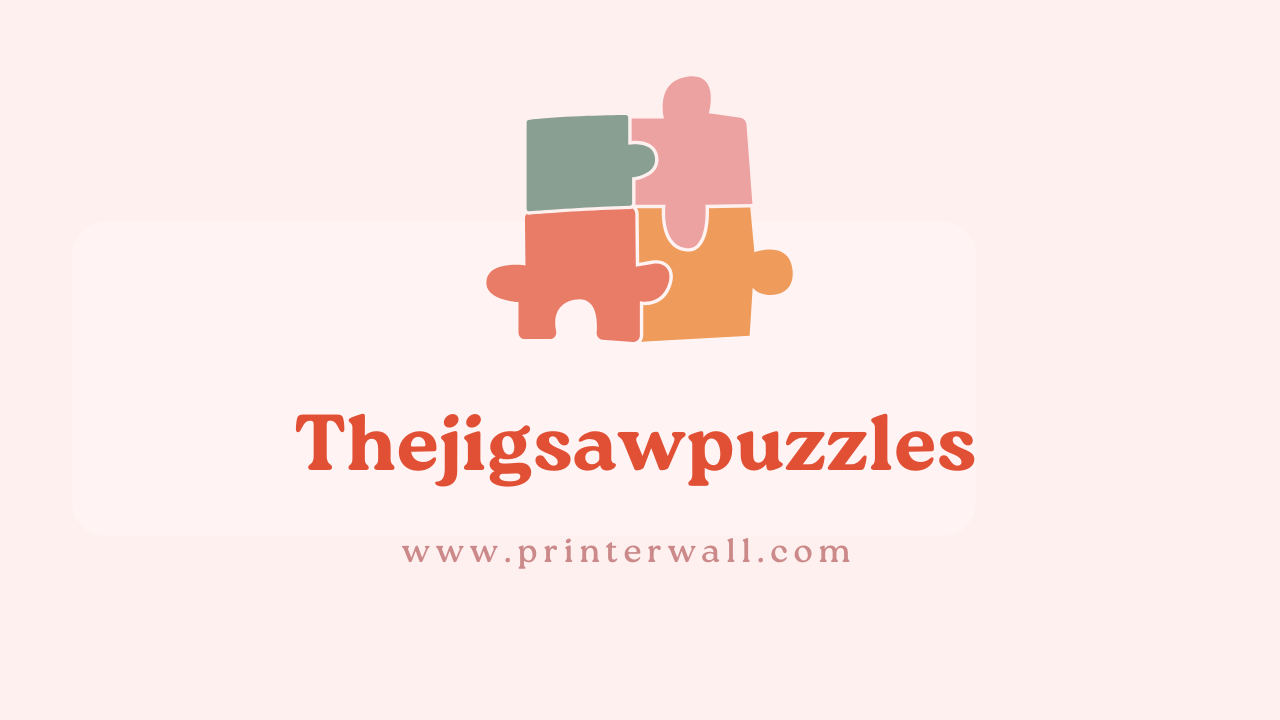In today’s fast-paced world, where digital screens dominate our leisure time, there’s something deeply satisfying and nostalgic about sitting down with a jigsaw puzzle. The jigsaw puzzle, a timeless pastime that has captivated minds young and old for generations, offers a unique blend of challenge, creativity, and relaxation. This article explores the world of jigsaw puzzles, from their fascinating history to tips on solving them quickly, and much more.
Unraveling the Pieces: The History of Jigsaw Puzzles
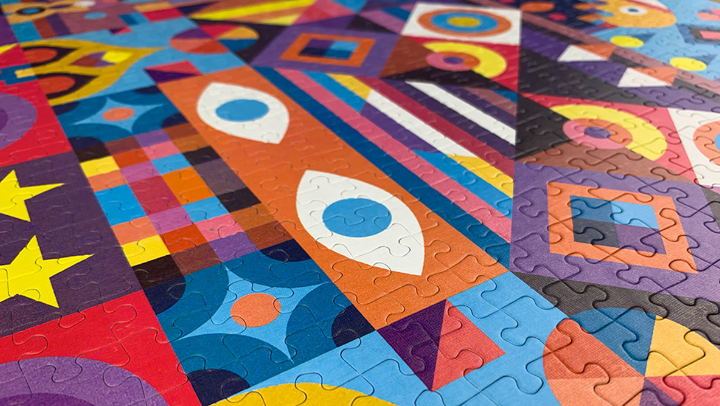
Jigsaw puzzles have a rich and intriguing history that dates back to the 18th century. Originally, they were known as “dissected maps” and were used to teach geography to children. These early puzzles were crafted from wood and cut into irregular pieces, resembling the intricate lines of geographical boundaries.
As time progressed, puzzles evolved into a popular form of entertainment for adults as well. They became known as “jigsaw puzzles” due to the mechanical jigsaw used to cut them into pieces. This innovation allowed for more intricate shapes, making the puzzles even more challenging and visually appealing.
Crafting Masterpieces: Jigsaw Puzzle Artwork
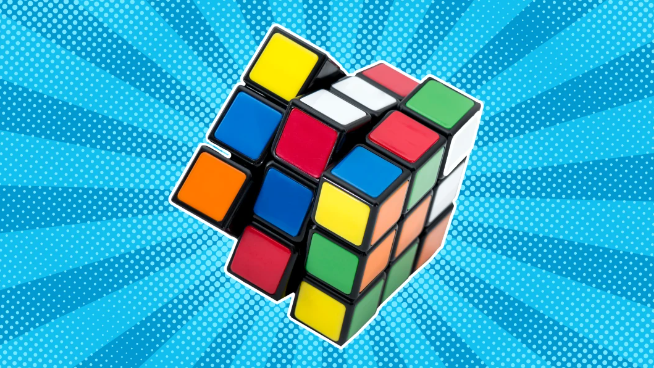
Jigsaw puzzles aren’t just about fitting pieces together; they’re also a canvas for beautiful artwork. Renowned artists have created stunning puzzle designs, turning these puzzles into art collections themselves. Some famous jigsaw puzzle artists include Charles Wysocki, Thomas Kinkade, and Bente Schlick, each known for their distinct styles that bring life to these puzzles.
The Puzzle Pieces: Materials and Cutting Techniques
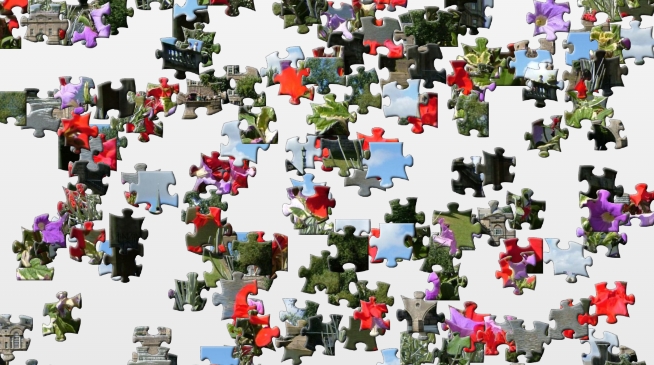
Jigsaw puzzles come in various materials, with wooden and paperboard puzzles being the most popular. Wooden puzzles are durable and provide a satisfying tactile experience, while paperboard puzzles are more accessible and affordable. The choice of material can significantly impact your puzzle-solving experience.
Cutting techniques are another fascinating aspect of jigsaw puzzles. Manufacturers employ intricate cutting patterns, creating puzzle pieces with unique shapes and curves. Some puzzles feature whimsical pieces that add an extra layer of challenge and fun to the assembly process.
Solving the Enigma: Tips and Strategies
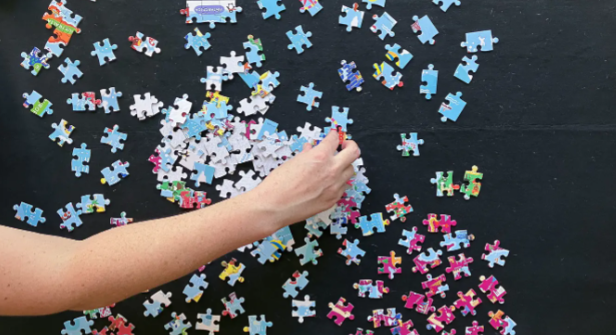
Solving a jigsaw puzzle is a delightful journey of discovery. Whether you’re a novice or an experienced puzzler, here are some tips and strategies to help you conquer the challenge:
- Sort by Color and Edges: Start by separating pieces by color and identifying edge pieces. Building the puzzle’s border provides a helpful framework.
- Focus on Patterns: Look for patterns, such as repeating colors or distinctive shapes within the image. These patterns can guide your assembly.
- Trial and Error: Don’t be afraid to experiment. If a piece doesn’t fit in one spot, try it elsewhere. Sometimes, a piece may surprise you with its fit.
- Use Reference Images: Keep the puzzle box or a reference image nearby. It’s a valuable tool for understanding the bigger picture.
- Take Breaks: Puzzling can be addictive, but it’s essential to take breaks to avoid frustration. A fresh perspective can often lead to breakthroughs.
The Puzzle Collection: Themes and Variations
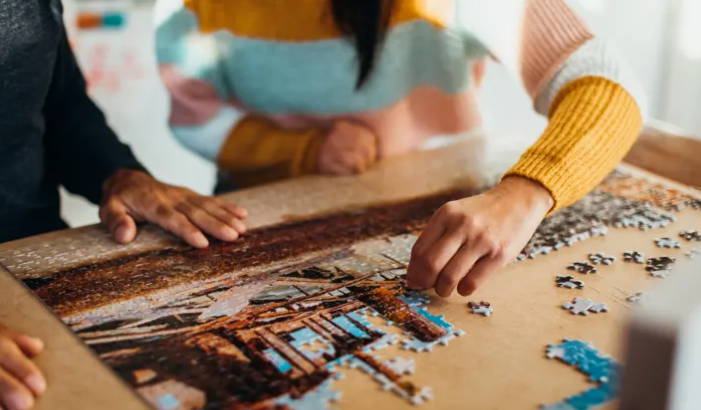
Jigsaw puzzles come in an astonishing array of themes, catering to diverse interests. From picturesque landscapes to famous landmarks, wildlife, and even intricate abstract designs, there’s a puzzle theme for everyone. Some popular themes include:
- Nature and Landscapes: Escape to the beauty of nature with puzzles featuring scenic landscapes, forests, and oceans.
- Cities and Landmarks: Piece together iconic landmarks and cityscapes from around the world.
- Animals and Wildlife: Explore the animal kingdom with puzzles showcasing everything from adorable kittens to majestic elephants.
- Art and Abstract: Dive into the world of art with puzzles inspired by famous paintings or intricate abstract designs.
- Vintage and Nostalgia: Take a trip down memory lane with puzzles featuring vintage cars, retro advertisements, and more.
The Challenge Beyond: Jigsaw Puzzle Competitions
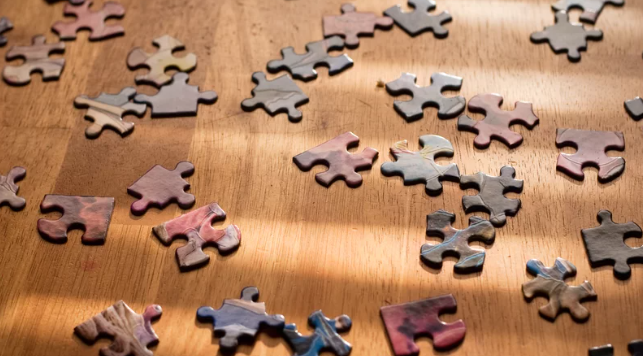
For those who truly relish the thrill of puzzling, organizing a jigsaw puzzle competition can be a rewarding endeavor. Whether it’s a friendly gathering or a competitive event, here are some tips for hosting a successful puzzle challenge:
- Select the Right Puzzles: Choose puzzles of varying difficulty levels to cater to participants of all skill levels.
- Set Clear Rules: Define the rules and guidelines for the competition, including time limits, team sizes, and scoring criteria.
- Create a Comfortable Environment: Ensure participants have ample space, good lighting, and comfortable seating to enjoy the puzzle-solving experience.
- Provide Refreshments: Snacks and drinks can keep participants energized and focused during the competition.
- Prizes and Recognition: Offer attractive prizes or certificates for winners and celebrate participants’ achievements.
Beyond the Table: Creative Ways to Display Completed Puzzles
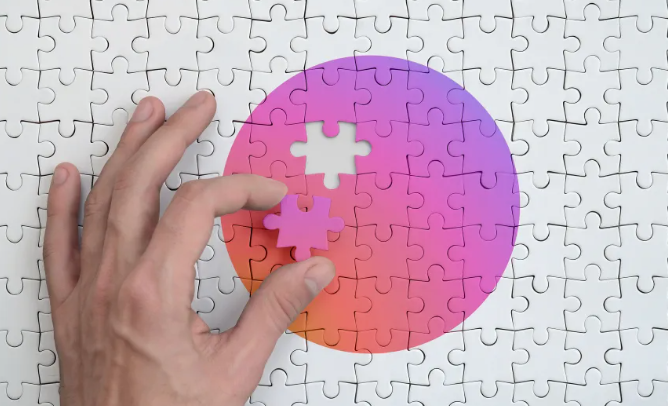
Once you’ve completed a jigsaw puzzle, it’s time to showcase your masterpiece. There are numerous creative ways to display your hard work:
- Framing: Frame your completed puzzle as a work of art. Specialized puzzle frames are available for this purpose.
- Mod Podge: Use Mod Podge to secure and seal your puzzle, turning it into a unique wall art piece.
- Puzzle Glue Sheets: Puzzle glue sheets adhere to the back of the puzzle, making it easy to display on a poster board or mount it on a wall.
- Custom Frames: Consider custom framing for your puzzle to match your décor or add a personal touch.
- Shadow Boxes: Shadow boxes allow you to display your puzzle in a 3D format, adding depth and dimension to the artwork.
The Digital Twist: Online Jigsaw Challenges
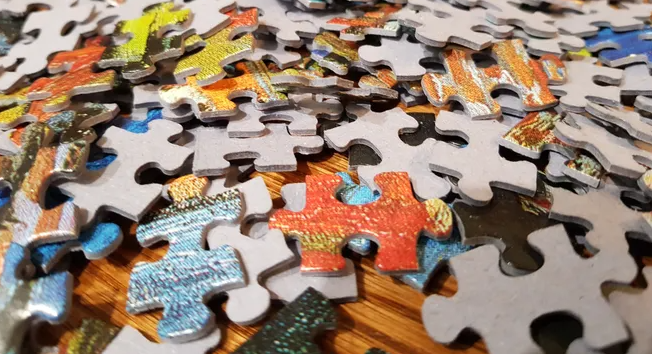
In the age of technology, jigsaw puzzles have found a new home online. Numerous websites and apps offer a wide range of jigsaw puzzles for players of all skill levels. Some even allow you to create custom puzzles from your photos. If you’re looking for free online jigsaw puzzle games, here are a few popular options:
- JigZone: JigZone offers a vast collection of free online puzzles with various piece counts and themes.
- Jigsaw Explorer: Explore a wide selection of puzzles, including the ability to upload your images for a personalized experience.
- Jigsaw Planet: Create, share, and play jigsaw puzzles with this user-friendly platform. You can also access a library of puzzles created by other users.
- National Geographic Kids: Perfect for young puzzlers, National Geographic Kids offers puzzles featuring stunning wildlife and nature photography.
Mindful Entertainment: The Benefits of Solving Jigsaw Puzzles
While jigsaw puzzles are undeniably entertaining, they offer a range of cognitive and psychological benefits, making them an excellent choice for adults seeking mindful leisure activities:
- Stress Reduction: Engaging in puzzle-solving can promote relaxation and reduce stress levels.
- Improved Concentration: Solving puzzles requires focus and concentration, enhancing cognitive abilities.
- Enhanced Memory: Regular puzzling can improve memory and problem-solving skills.
- Sense of Accomplishment: Completing a challenging puzzle provides a sense of achievement and satisfaction.
- Social Interaction: Puzzles can be a social activity, fostering connections with friends and family.
Preserving the Puzzle: Tips for Storage and Maintenance
Once you’ve completed a puzzle, you’ll want to preserve it for future enjoyment. Here are some tips for storing and maintaining your completed puzzles:
- Use Puzzle Saver Sheets: Puzzle saver sheets are adhesive sheets that can be applied to the back of the puzzle to hold it together.
- Frame It: Framing the puzzle not only displays it beautifully but also protects it from dust and damage.
- Store Flat: If you’re not ready to frame the puzzle, store it flat in a puzzle storage system or on a piece of cardboard to prevent warping.
- Avoid Direct Sunlight: UV rays from direct sunlight can fade the puzzle’s colors, so choose a location away from sunlight for display.
- Handle with Care: When moving or cleaning your puzzle, handle it gently to avoid damaging the pieces.
In Search of the Ultimate Challenge: World Records and Large-Scale Puzzles
For some, the standard puzzle sizes are not enough. The world of jigsaw puzzles also includes massive, record-breaking creations. As of [knowledge cutoff date], the largest jigsaw puzzle ever assembled holds the Guinness World Record. This colossal puzzle consisted of an astonishing 551,232 pieces and depicted a stunning underwater scene. Assembling such a behemoth is a monumental achievement that pushes the limits of puzzling to new heights.
Crafting Your Puzzle: Custom Jigsaw Designs
Creating a custom jigsaw puzzle from a cherished photo is a heartfelt way to celebrate memories or surprise loved ones. Many online services allow you to design and order personalized puzzles. Here’s a brief guide on how to create your custom jigsaw puzzle:
- Select Your Image: Choose a high-resolution image that holds sentimental value or features a captivating scene.
- Choose Puzzle Specifications: Decide on the puzzle size, piece count, and any additional customization options.
- Upload and Order: Upload your chosen image, customize the puzzle details, and place your order with the puzzle manufacturer.
- Receive and Assemble: Once your custom puzzle arrives, enjoy the excitement of assembling a unique creation.
Missing Pieces: Dealing with Lost Puzzle Pieces
It’s a puzzler’s nightmare: completing a puzzle only to discover a missing piece. While it can be frustrating, there are a few steps you can take to address this issue:
- Search Thoroughly: Double-check the puzzle area and the surroundings for the missing piece. It may have fallen on the floor or gotten stuck in a crevice.
- Contact the Manufacturer: Reach out to the puzzle manufacturer or distributor. Some companies offer replacement pieces for their puzzles.
- Get Creative: If a replacement piece isn’t available, you can attempt to create a replacement piece using cardboard or by carefully cutting a matching piece from another puzzle.
Puzzle Maintenance: Cleaning and Care
To ensure the longevity of your jigsaw puzzles, it’s essential to keep them clean and well-maintained. Here are some tips for caring for your puzzle pieces:
- Dust Regularly: Use a soft brush or compressed air to remove dust from the puzzle’s surface.
- Avoid Liquid Cleaners: Do not use liquid cleaners or water, as they can damage the puzzle pieces.
- Store in a Cool, Dry Place: Store your puzzles in a temperature-controlled environment to prevent warping or moisture damage.
- Handle with Clean Hands: Always wash your hands before handling puzzles to prevent transferring oils and dirt to the pieces.
The Jigsaw Puzzle Community: Enthusiasts and Hobbyists
Jigsaw puzzles have a dedicated and passionate community of enthusiasts and hobbyists. These individuals gather online and in person to share their love for puzzling, swap tips and strategies, and showcase their completed masterpieces. Joining a puzzle community can be a rewarding experience, as it allows you to connect with like-minded individuals who appreciate the beauty and challenge of jigsaw puzzles.
A World of Endless Possibilities: Custom Jigsaw Designs
Creating a custom jigsaw puzzle is a delightful way to infuse personal meaning into your puzzling experience. Whether it’s a cherished family photo, a beautiful landscape from your travels, or a piece of art you’ve created, transforming it into a jigsaw puzzle adds a unique dimension to the image. Here’s a closer look at how to go about crafting your custom jigsaw design:
- Image Selection: Begin by choosing an image that holds significance for you or the intended recipient. It could be a family portrait, a snapshot of a memorable vacation, a beloved pet, or even a piece of your own artwork.
- Puzzle Specifications: Decide on the puzzle’s specifications. Consider factors such as the puzzle size, piece count, and level of complexity. Smaller puzzles may have fewer pieces, making them ideal for quick enjoyment, while larger ones can provide a more challenging and immersive experience.
- Upload and Order: Many online services and puzzle manufacturers offer custom puzzle creation tools on their websites. Upload your chosen image, select your preferred puzzle specifications, and place your order. Make sure to review the image preview to ensure it aligns with your expectations.
- Quality Matters: Opt for a reputable puzzle manufacturer with a track record of producing high-quality custom puzzles. The printing quality and durability of the puzzle pieces are crucial for a satisfying puzzling experience.
- The Unveiling: Once your custom puzzle arrives, the excitement of seeing your image transformed into puzzle pieces is truly special. Assemble it at your own pace, savoring each piece that brings your chosen image to life.
Beyond the Ordinary: Irregular Puzzle Shapes
While standard puzzle pieces come in recognizable shapes like interlocking tabs and knobs, irregular puzzle shapes take jigsaw puzzling to a whole new level of complexity and artistry. These puzzles eschew conventional piece shapes, opting for intricate, whimsical designs that mimic elements from the image itself. Here’s a glimpse into the world of irregular puzzle shapes:
- Artistic Integration: Irregular puzzle shapes are designed to seamlessly integrate with the puzzle’s image. Pieces may follow the contours of objects, mimic the shapes of animals, or adopt thematic elements from the scene.
- Added Challenge: These puzzles offer a heightened level of challenge due to the absence of uniform piece shapes. Solvers must rely more on visual cues and the image itself to guide their assembly.
- Enhanced Aesthetics: Beyond their puzzle-solving appeal, irregular puzzles are often celebrated as works of art in their own right. When completed, they transform into stunning displays of craftsmanship and creativity.
- Specialized Manufacturers: Irregular puzzle shapes are typically crafted by specialized manufacturers who prioritize both the artistic and functional aspects of puzzling. Seek out these artisans for a truly unique and immersive experience.
Puzzle Solving as a Mindful Activity
In today’s fast-paced world, finding moments of mindfulness is essential for our well-being. Jigsaw puzzles provide an opportunity to disconnect from screens, quiet the mind, and immerse oneself in a meditative activity. Here’s how puzzling can become a mindful practice:
- Focused Attention: Solving a jigsaw puzzle demands your full attention. As you search for matching pieces, your mind naturally focuses on the task at hand, temporarily setting aside worries and distractions.
- Stress Reduction: Engaging in a puzzle can trigger the relaxation response, reducing the production of stress hormones. This calming effect can help alleviate stress and anxiety.
- Enhanced Problem-Solving: Puzzling sharpens your problem-solving skills. You learn to approach challenges methodically, breaking them down into smaller, more manageable steps.
- Creativity Boost: Puzzles stimulate your creativity as you piece together intricate images. You develop an eye for detail and a greater appreciation for the beauty in the world around you.
- Connection and Bonding: Solving puzzles with others can foster connections and strengthen relationships. It’s a shared experience that encourages communication and teamwork.
The Educational Value of Jigsaw Puzzles
Jigsaw puzzles are not only an enjoyable pastime for children but also a valuable tool for their cognitive and educational development. Here are some of the educational benefits of introducing jigsaw puzzles to young learners:
- Fine Motor Skills: Picking up and manipulating puzzle pieces enhances fine motor skills, improving a child’s ability to control hand movements.
- Spatial Awareness: Assembling puzzles helps children develop spatial awareness, teaching them about shapes, sizes, and how pieces fit together.
- Problem Solving: Puzzles encourage logical thinking and problem-solving. Children learn to analyze and strategize as they search for the right pieces.
- Patience and Persistence: Completing a puzzle requires patience and persistence. Children develop these essential life skills as they work toward a goal.
- Cognitive Development: Puzzles stimulate cognitive functions such as memory, concentration, and visual-spatial reasoning.
- Vocabulary Enhancement: Puzzles often feature images of various objects, animals, and scenes, contributing to vocabulary development as children identify and discuss what they see.
The Puzzle Industry: Manufacturing Insights
Have you ever wondered how those intricate puzzle pieces are created? Jigsaw puzzle manufacturing is a fascinating process that combines artistry and precision. Here’s a glimpse behind the scenes:
- Design and Artwork: The journey begins with the selection of artwork or image. Skilled artists and designers transform these images into puzzles, carefully considering piece shapes and complexity.
- Printing: The chosen image is printed onto a large sheet, and an adhesive layer is applied to secure it to the puzzle board.
- Cutting and Die-Making: A metal die, which defines the shape of each puzzle piece, is created. This die is used to stamp out the individual pieces. Manufacturers often have a variety of dies to create different piece shapes.
- Quality Control: After cutting, the puzzle pieces undergo thorough quality control to ensure they meet the manufacturer’s standards. This includes checking for any defects or imperfections.
- Packaging: Once approved, the pieces are sorted, counted, and packaged into boxes. The box typically features an image of the completed puzzle and any additional information about the puzzle’s difficulty level.
- Distribution: The finished puzzles are distributed to retailers, both physical stores and online platforms, where they await eager puzzlers.
Jigsaw Puzzles in Pop Culture
Jigsaw puzzles have made their way into popular culture in various forms, showcasing their enduring appeal and influence on society. Here are some instances of puzzles in entertainment and media:
- Movies and Television: Jigsaw puzzles have been featured in several movies and TV shows. Notable examples include the film “Puzzle” (2018), which explores the life-changing impact of puzzle-solving, and the TV series “Breaking Bad,” where a puzzle plays a significant role in a key plot point.
- Video Games: The concept of puzzles is a central theme in many video games. Titles like “The Witness” and “Portal” challenge players with complex puzzles that require creative problem-solving.
- Literature: Puzzles often appear in literature as symbols of mystery and discovery. Novels like “The Da Vinci Code” by Dan Brown use puzzles as a driving force in the storyline, adding intrigue and depth to the narrative.
- Art Installations: Some contemporary artists incorporate puzzles into their installations and artworks, blurring the lines between traditional puzzling and fine art. These pieces often invite viewers to participate in solving the puzzle as part of the artistic experience.
- Online Communities: The digital age has given rise to online communities dedicated to jigsaw puzzles. Enthusiasts share their completed puzzles, discuss strategies, and connect with others who share their passion for puzzling.
The Thrill of Competition: Jigsaw Puzzle Contests
For those who crave more than solitary puzzling, jigsaw puzzle contests offer an exhilarating way to put your skills to the test. These events bring together avid puzzlers from around the world to compete in speed and precision. Key highlights of jigsaw puzzle contests include:
- Speed Challenges: Participants race against the clock to complete a puzzle within a specified time limit. This format demands quick thinking and dexterity.
- Team Competitions: Some contests involve teams working together to solve a large puzzle collectively. Team members must communicate effectively to achieve a seamless assembly.
- Scoring Systems: Contests often have scoring systems that reward accuracy and penalize errors. This ensures that participants not only complete the puzzle quickly but also do so correctly.
- Prizes and Recognition: Winning contestants may receive prizes, trophies, or recognition within the puzzling community. The prestige of being a puzzle champion is a motivating factor for many.
- Community-Building: Puzzle contests foster a sense of camaraderie among participants. It’s an opportunity to meet like-minded individuals who share a passion for puzzles and friendly competition.
The Artistry of Puzzle Images
The appeal of jigsaw puzzles goes beyond the act of assembly itself; it’s also about the captivating images that adorn the pieces. Puzzle manufacturers meticulously select artwork and photographs that cater to diverse tastes. Here are some aspects of puzzle images:
- Photographic Realism: Some puzzles feature high-quality photographs that capture breathtaking landscapes, wildlife, and cityscapes with remarkable detail and clarity.
- Fine Art Reproductions: Art lovers can find puzzles featuring famous paintings by renowned artists. These puzzles allow enthusiasts to recreate and appreciate art in a hands-on way.
- Whimsical Illustrations: Many puzzles embrace whimsical and imaginative illustrations, creating a sense of wonder and playfulness that adds to the puzzling experience.
- Custom Images: Some individuals choose to create custom puzzles from their own photos or artwork, transforming personal memories into puzzling adventures.
- Educational Themes: Puzzles designed for children often feature educational themes, such as dinosaurs, the solar system, or historical landmarks, making learning fun through play.
Puzzle Collectors and Enthusiasts
Just as stamp collectors cherish rare stamps and coin collectors seek unique coins, there is a dedicated community of puzzle collectors who appreciate the value of rare and vintage jigsaw puzzles. Collectors often seek out puzzles with historical significance, artistic value, or limited editions. Some even go to great lengths to acquire puzzles that are no longer in production or have become sought-after collector’s items.
Collecting puzzles can be a rewarding hobby that combines a passion for puzzling with a fascination for the artistry and craftsmanship of these unique creations. It’s a way to preserve the history of jigsaw puzzles and share their beauty with future generations.
Finding Solace in Solitude: The Therapeutic Benefits of Puzzling
In an increasingly digital and connected world, jigsaw puzzles offer a respite from the constant stream of information and notifications. Engaging with a puzzle provides a soothing and meditative experience that can be particularly therapeutic:
- Stress Reduction: The repetitive nature of puzzle-solving can lower stress levels and promote relaxation. It’s an opportunity to escape the demands of daily life and unwind.
- Mindfulness: Puzzling encourages mindfulness, as it requires your full attention on the task at hand. This practice of being present in the moment can reduce anxiety and improve mental clarity.
- Improved Sleep: Engaging in a calming activity like puzzling before bedtime can contribute to better sleep quality by quieting a restless mind.
- Emotional Release: Some individuals find that puzzling provides an emotional release and a sense of accomplishment, especially when they complete challenging puzzles.
- Cognitive Benefits: Beyond relaxation, puzzling engages cognitive functions, keeping the brain active and agile. It can be particularly beneficial for seniors as a form of mental exercise.
Puzzle Preservation: Storing and Displaying Completed Masterpieces
Once you’ve completed a jigsaw puzzle, you’ll want to ensure it remains in pristine condition, whether as a keepsake or a work of art. Here are some tips for storing and displaying your completed puzzles:
- Framing: Framing your completed puzzle not only protects it but also transforms it into a striking piece of wall art. Custom framing allows you to choose a frame that complements the image.
- Gluing and Mounting: Some individuals choose to apply puzzle glue or adhesive sheets to the back of the puzzle to secure the pieces. Once dried, the puzzle can be framed or displayed on a board.
- Shadow Boxes: Shadow boxes provide a 3D display option for puzzles. They allow you to showcase your completed puzzle while protecting it from dust and damage.
- Roll-Up Mats: For those who enjoy reassembling puzzles multiple times, roll-up mats with storage tubes offer a convenient way to store partially completed puzzles.
- Storage Solutions: When not on display, store your completed puzzles flat in puzzle storage systems, on cardboard, or between sheets of wax paper to prevent warping or damage.
By preserving your completed puzzles thoughtfully, you can relive the sense of achievement and satisfaction they bring for years to come.
The Global Puzzle Community
Puzzlers around the world share a common bond—a love for jigsaw puzzles. The global puzzle community is a diverse and inclusive network of individuals who come together to celebrate their shared passion. Here’s how this community thrives:
- Online Forums: Internet forums and social media groups dedicated to puzzles serve as virtual meeting places. Puzzlers can discuss their favorite brands, share completed puzzles, and seek advice from fellow enthusiasts.
- Puzzle Exchanges: Some members of the community exchange puzzles with each other, allowing them to enjoy a variety of puzzles without constantly purchasing new ones.
- Local Clubs and Events: In-person puzzle clubs and events provide opportunities for enthusiasts to meet, compete, and engage in group puzzling activities.
- Collaborative Projects: Collaborative puzzle projects bring together puzzlers from different corners of the world to work on massive puzzles that would be challenging for an individual to complete.
- Sharing Expertise: Enthusiasts often share tips and techniques for puzzle assembly, helping newcomers improve their skills and tackle more challenging puzzles.
Also Read: Polygonle: The official geometric puzzle game
Conclusion
The world of jigsaw puzzles is a multifaceted realm that encompasses artistry, competition, therapeutic benefits, and a vibrant global community. From their rich history and artistic appeal to the joy of completing a challenging puzzle, there’s no shortage of reasons why jigsaw puzzles continue to captivate and unite people of all ages and backgrounds. Whether you’re drawn to the complexity of irregular puzzle shapes, the thrill of competitive contests, or the meditative solace of puzzle therapy, this timeless pastime offers a world of intrigue and entertainment waiting to be explored and shared.

Aretha Davis, the wordsmith extraordinaire, weaves enchanting tales with her pen and keyboard. A renowned blogger and writer, her captivating prose transports readers to realms unknown. Join her literary journey and be swept away by the magic of her words.
